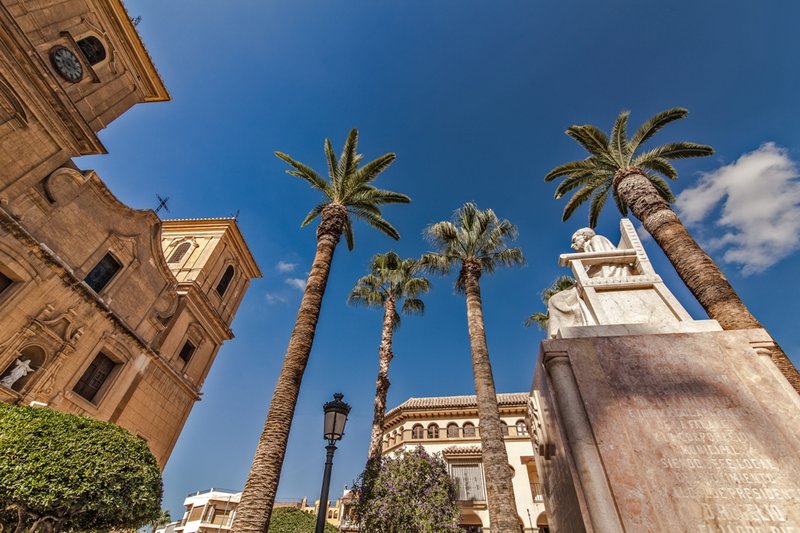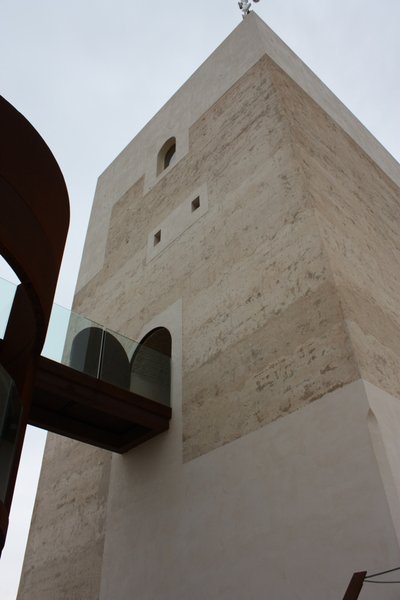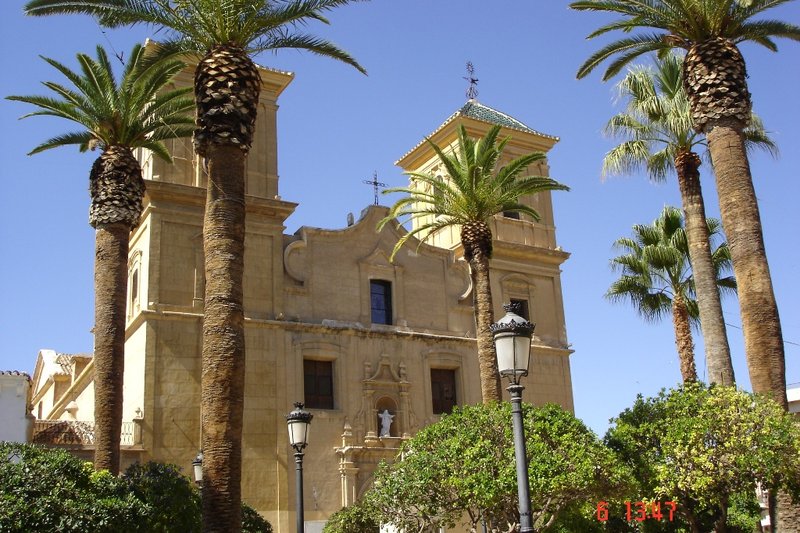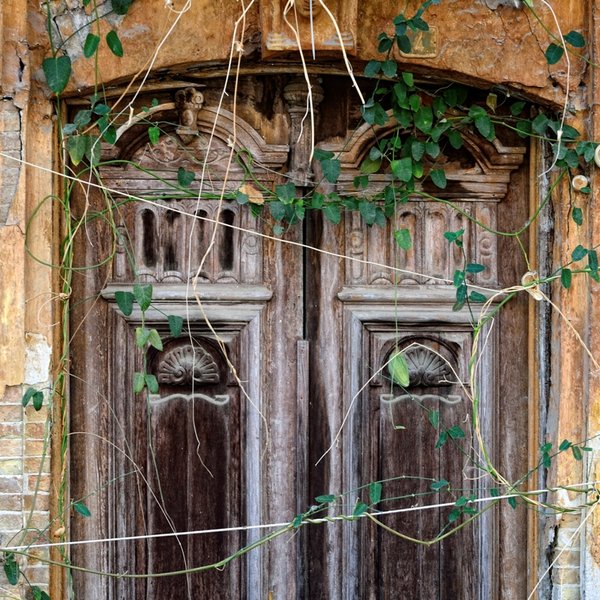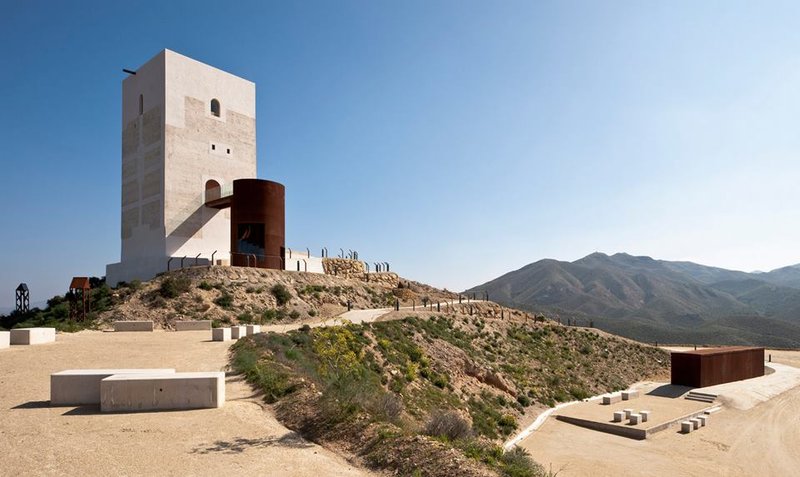Huércal-Overa

Village situated in the northeast of the province, on the border with the province of Murcia, in a landscape that looks more and more like that of the east, made up of fertile AREAs of irrigated land next to the watercourses and of dry hills covered in esparto grass and semi-desert like elsewhere.
Its privileged location has enabled the village to be an important commercial centre since ancient times and now it is still an obligatory route between the east and the south. This fact is reflected in the urban structure which preserves buildings and singular monuments such as the Asunción Parish Church, the Granary, the Town Hall (old courthouse), the Arabic Tower and the Palace of Four Towers (Palacete de las Cuatro Torres).
History
On the border with the province of Murcia. For Menendez Pidal the origin of the place-name Huercal-Overa lies in the repopulation of two different villages at the end of the XVI century.The presence of Phoenicians and Greeks (in search of minerals), Carthaginians and Romans is known about. On the summit of Cabezo de la Jara is Escipion Cave, named after a Roman general who is thought to have been here with his army. He died locked up in a tower after being defeated by the Carthaginian general Asdrubal. The Roman emperor Augustus included Huercal-Overa, Purchena and Velez Rubio in the Roman province of Tarraconense.
The origin of Huercal-Overa can be pinpointed to the Al-Andalus period. From these times the Arabic castle of Huercal and the castle of Santa Barbara de Overa remain. These make up, together with other fortresses, a secure defence for this part of the Kingdom of Granada.
With the Christian conquest it was annexed and donated to the town of Lorca for services rendered in the year 1488. Its population was very depleted, especially that of Overa who preferred to leave rather than renege on their faith. After the War of the Alpujarras (1568-1570) and the expulsion of the Moors, repopulation was started between the years 1572 and 1573, with Overa annexed to Huercal. In the year 1668 it achieved total independence from Lorca under the name we know today and by means of a purchase document made to the Royal Exchequer.
In the War of Independence the events that are recounted about the inhabitants of this village are heroic. Fierce battles were waged in the streets, and on some occasions the village had to be taken house by house.
The XIX century is characterized by the increase of population. In 1805 it had 2,186 inhabitants, in 1834 it had 3,315 and in 1887 it had 15,631 inhabitants between the village itself and the countryside. Parallel to this demographic increase, there was an increase and expansion of the village buildings.
During the XX century the different international conflicts and above all the Civil War affected the village. In the surrounding AREA there still remains an AREA of trenches. It also suffered the long postwar period and emigration. From the seventies onwards this land through which such illustrious travellers as Gerald Brenan, Virginia Wolf and Juan Goytisolo have passed, opened itself up with new hope.
Eminent citizens
Carmen Pinteño, painter.
Cura Valera, in the process of beatification.

- Max 11
- Min 9
- Max 51
- Min 48
- °C
- °F





